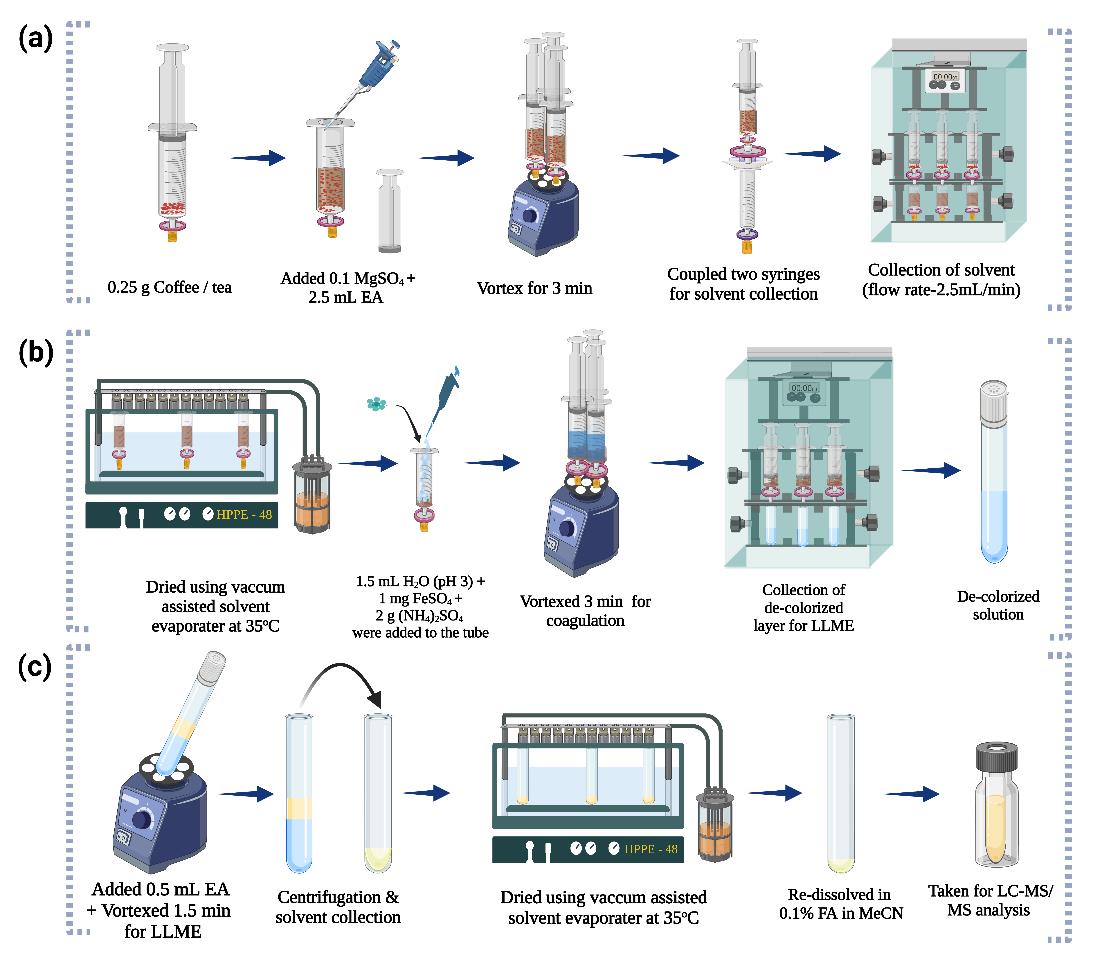Ultra-sensitive determination of Ochratoxin A in coffee and tea samples using a novel semi-automated in-syringe-based coagulant-assisted fast mycotoxin extraction (FaMEx) technique coupled with UHPLC-MS/MS
2023 / 09 by Professor Vinoth Kumar Ponnusamy
Abstrcat:
Ochratoxin A contamination in coffee can occur at different stages of the coffee production process. It can be present in coffee beans while still on the coffee plant. Still, it's more commonly associated with post-harvest stages, such as improper drying, storage, or transportation conditions. Mold species from the Aspergillus and Penicillium genera are responsible for ochratoxin A production in coffee beans. The International Agency for Research on Cancer (IARC) classifies ochratoxin A as a possible human carcinogen. Chronic exposure to ochratoxin-A has been associated with kidney damage, immunosuppression, and a potentially increased risk of developing certain types of cancers. Therefore, there are strict regulations in place in many countries to limit the levels of ochratoxin A in food products, mainly coffee. The primary objective of this study is to develop a new technique for the fast and efficient extraction and quantification of Ochratoxin A in coffee and tea samples.
The method used in this study is called "semi-automated in-syringe-based coagulant-assisted liquid–liquid microextraction" (IS-CGA-LLME). It involves a three-step extraction process as follows. Extraction (I): Ochratoxin A is extracted from the coffee and tea samples using a low-volume solvent extraction. Clean-up (II): The extract is then subjected to a coagulation process to remove impurities. Pre-concentration (III): The cleaned-up extract is processed using liquid-liquid microextraction to concentrate the ochratoxin A. Finally, the pre-treated coffee and tea samples containing ochratoxin A are quantified using ultra-high-performance liquid chromatography connected with a tandem-mass spectrometer. The method achieved highly sensitive detection and quantification limits of 0.001 and 0.003 ng g−1 for ochratoxin A, respectively. The extraction method demonstrated excellent recovery from 93% to 111% range with less than 10%, which suggests that the results are reproducible and reliable.
In summary, we introduced a coagulation-based analytical sample pre-treatment technique for the first time in food sample pre-treatment. The study concludes that the developed IS-CGA-LLME method is a low-cost, simple, compassionate, semi-automated, and low-matrix effect technique for determining ochratoxin A, specifically ochratoxin A, in food samples such as coffee and tea. Meanwhile, this study presents an efficient method for extracting and quantifying ochratoxin A in coffee and tea, with high sensitivity, good recovery rates, and precision. This technique has potential applications in food safety and quality control, especially for monitoring mycotoxin contamination in coffee and tea samples.

Figure: Graphical representation of the semi-automated in-syringe-based coagulant-assisted liquid–liquid microextraction
Key Points:
- A novel in-syringe-based coagulant-assisted microextraction technique was developed.
- Ferrous sulfate, as a coagulation agent exhibited excellent matrix elimination.
- This method utilizes semi-automated setups with minimal sample and solvent amounts.
- This protocol is a simple, highly sensitive, low-matrix effect and efficient procedure.
- Applied for analyzing mycotoxin in coffee and tea samples using LC-MS/MS.
More Information:
Prakasham K, Gurrani S, Shiea J, Wu MT, Wu CF, Lin YC, Tsai B, Huang PC, Andaluri G, Ponnusamy VK*. Ultra-sensitive determination of Ochratoxin A in coffee and tea samples using a novel semi-automated in-syringe based coagulant-assisted fast mycotoxin extraction (FaMEx) technique coupled with UHPLC-MS/MS. Food Chem. 2023 Aug 15;417:135951. doi: 10.1016/j.foodchem.2023.135951. (SCIE, IF2022: 8.8, 2/108=1.85% in Nutrition & Dietetics)
Introduction of Research Team:
Nano Green Analytical Chemistry of Professor. Vinoth Kumar hails from the Research Centre of Precision Environmental Medicine, at Kaohsiung Medical University (KMU), Taiwan. It has been leading the Nano and Green Analytical Technology spectrum since 2016. The lab focuses on human biomonitoring projects, monitoring/analyzing drugs, biomarkers, and biometabolites. The lab is a vital part of the Department of Medicinal and Applied Chemistry, where the research is multilaterally focused on novel nanomaterials, biomass conversion, biofuels, sample preparations, green analytical methodologies, chromatographic and mass spectrometric analysis, and analytical method developments with application towards clinical, food, drugs, and environmental research.

